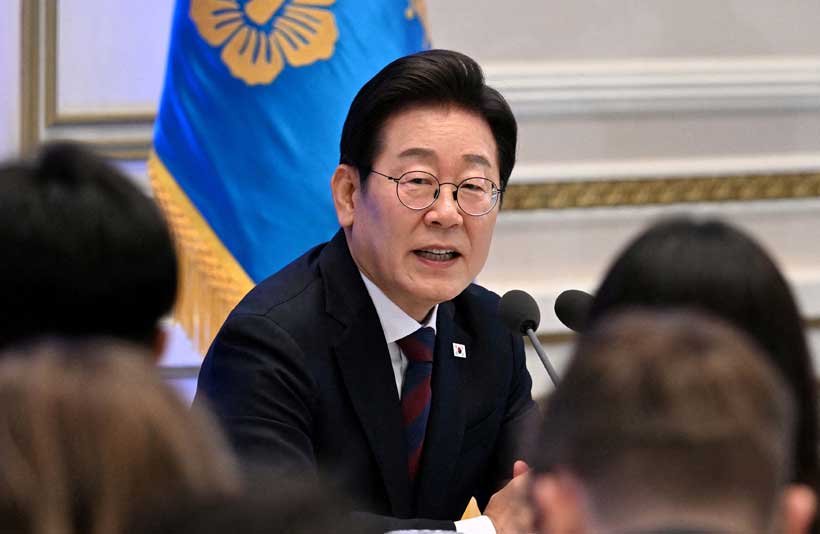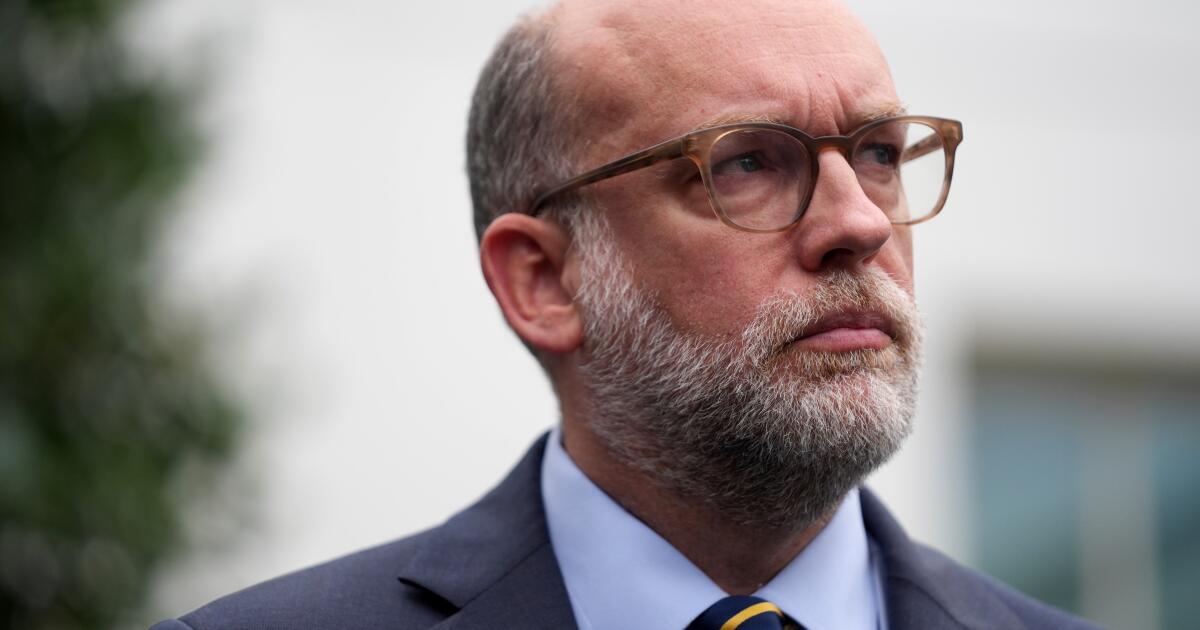Arc Orbital Supply Capsule Aims To Put Military Supplies Anywhere On Earth Within An Hour
A special operations team is pinned down in a valley deep inside contested territory. Ammo is running low, and close air support is nonexistent. Extraction forces are still hours out. The operatives have kept the enemy at bay, but their ability to do so is dwindling with every round they fire. Their stocks of 40mm grenades have long been exhausted; now their rifles will soon run dry too. The sky cracks with a sonic boom, which echoes across the valley, and fighting pauses for a split second as fighters on both sides look up. Soon after, the shooting resumes, but out of the blinding sun comes a capsule stuffed with ammunition hanging on a parachute and flying right toward the special operations team.
Help has arrived… From orbit.
The above is a scene that sounds like it’s ripped right out of a Call Of Duty: Modern Warfare video game, but one company is working to make it a reality.
California-based space startup Inversion has unveiled its design for a fully reusable, lifting-body spacecraft named Arc. The spacecraft is intended to deliver critical cargo from space to any point on Earth within an hour, landing on water, snow or soil with a precision of around 50 feet, the company says. The concept, aimed squarely at the defense sector, reflects longstanding U.S. military interest in using space-based systems to rapidly move cargo around the globe to meet commanders’ urgent needs.
The mission concept involves the Arc spacecraft being launched into low Earth orbit atop a rocket. Arc then remains in orbit until its cargo is required to be delivered. At that point, the spacecraft uses a deorbit engine to re-enter the atmosphere, moving at very high speed. Arc uses small thrusters and large trailing-edge maneuvering flaps to adjust its position and speed during its fiery reentry, through the atmosphere, until it approaches the ‘drop zone.’
Once it has reached a lower altitude, Arc slows down and lands using its actively controlled parachute system. This is also able to fine-tune the spacecraft’s path back to Earth. The parachute ensures a soft landing, meaning that Arc can then be reused. The entire mission is uncrewed, with the Arc being commanded by autonomous control systems.

Interestingly, Inversion’s plan to field a spacecraft that’s able to put a cargo at any place on Earth within an hour has parallels with an ambition laid out by U.S. Transportation Command (TRANSCOM), back in 2020. TRANSCOM provides transportation services and solutions to all branches of the armed forces, as well as various other defense and governmental organizations.

Speaking back then, U.S. Army Gen. Stephen R. Lyons, TRANSCOM’s commander, said: “Think about moving the equivalent of a C-17 payload anywhere on the globe in less than an hour. Think about that speed associated with the movement of transportation of cargo… There is a lot of potential here…”
At that point, TRANSCOM had begun a partnership with both SpaceX and Exploration Architecture Corporation (XArc) to pursue space-based rapid delivery concepts. SpaceX has since been working with the Air Force and Space Force on the ‘Rocket Cargo’ program, which seeks to quickly deliver cargo anywhere on Earth that can support a vertical landing.

It should be noted, however, that the sizes of payloads that Arc will be able to deliver are much smaller than those outlined by Lyons. The spacecraft itself will measure only around eight feet by four feet.
The C-17 has a maximum payload of around 82 tons, although normal payloads are around 60 tons or less. Arc is reportedly planned to have a cargo of just 500 pounds. Still, small cargoes often require very big logistics. As we have noted in a prior piece:
“Even the Navy has said in the past that when ships encounter problems as a result of logistics-related issues that leave them partially mission capable or non-mission capable, 90 percent of the time this can be resolved by the delivery of a component weighing 50 pounds or less.“
Nevertheless, Inversion clearly sees a niche for the very high-speed delivery of what it describes as “mission-enabling cargo.”

Inversion doesn’t provide any specific examples of the kinds of cargoes that might be delivered by Arc, beyond “equipment, food, or other mission cargo.” Conceivably, key cargo could comprise time-sensitive equipment and ammunition needed at forward operating locations. Since these spacecraft would be pre-launched, they would likely be filled with a range of generic cargoes that are generally time-sensitive. Then, they would be deorbited on demand.
Today, other small autonomous resupply systems have been used in combat, like the paragliding Snow Goose, and others are in development or limited use now. But these systems fly exclusively within the atmosphere and are much slower, more vulnerable, and require regional basing or an aerial delivery platform to launch them from relatively nearby.

Bearing in mind the considerable cost of a space launch, these cargoes would presumably only be delivered in the most critical scenarios, the kinds where only a high-cost rapid transport would suffice.

Such a capability would appear to have particular relevance in the context of future contingencies in the Indo-Pacific theater. With a growing expectation that this region will see a future high-end conflict involving the U.S. military, the ability to call upon space-based systems, like Arc, to quickly bring critical supplies to the area could be of high value — provided, once again, that the technology can be mastered.
Since Arc is reusable, that would go some way to making it more cost-efficient, when the vehicle can be recovered. Inversion also proposes putting several Arc vehicles into orbit at the same time (it’s unclear if these would be transported by the same or different rockets). The result has been described as something like a series of “constellations” with a variety of contingency cargoes that could be tailored to different customers and operational theaters.
Each Arc vehicle is reportedly able to remain in orbit for up to five years.

Another advantage compared to other space-based cargo-delivery concepts is the fact that Arc uses a parachute landing system.
Arc can, in theory, deliver cargo to any place on the planet, including remote regions, disaster zones, or hard-to-access theaters of war. Other orbital delivery concepts, such as suborbital VTOL rockets, have needed at least some kind of infrastructure to support the cargo-recovery part of the mission, but Arc should do away with that requirement, at least for small cargoes.

Last month, Inversion conducted precision drop-testing to prove the actively controlled parachute system that ensures that Arc will be able to put its cargoes where they are needed.
The company now says it wants to conduct a first mission with Arc as early as next year, which seems highly ambitious.
On the other hand, the startup does have some valuable experience from its Ray spacecraft, Inversion’s first, which was launched in January of this year as part of SpaceX’s Transporter-12 mission. This test mission helped prove technologies, including solar panels, propulsion, and separation systems, which will be incorporated into Arc.

For the time being, Inversion is focused solely on Arc’s military potential, although there would clearly be specific commercial applications as well. There is also the question of the possibility of adapting Arc as a reusable and recoverable satellite or even orbital supply vehicle. Meanwhile, the company has spoken confidently of producing hundreds of examples of the spacecraft every year.
Before that happens, and presuming military customers are forthcoming, Inversion will need to prove that its concept of space-based cargo deliveries can be cost-effective. There will also be various other regulatory issues to overcome, bearing in mind that this is an altogether new kind of transportation system.

Despite multiple dead ends and abortive programs, the idea of using some kind of space-based solution for rapid transport across the globe is one that won’t go away. Potentially, with its much smaller cargo loads, reusable spacecraft, and parachute-landing system, Inversion’s de-orbit on-demand cargo concept could be the one that finally breaks the mold.
Contact the author: [email protected]





























